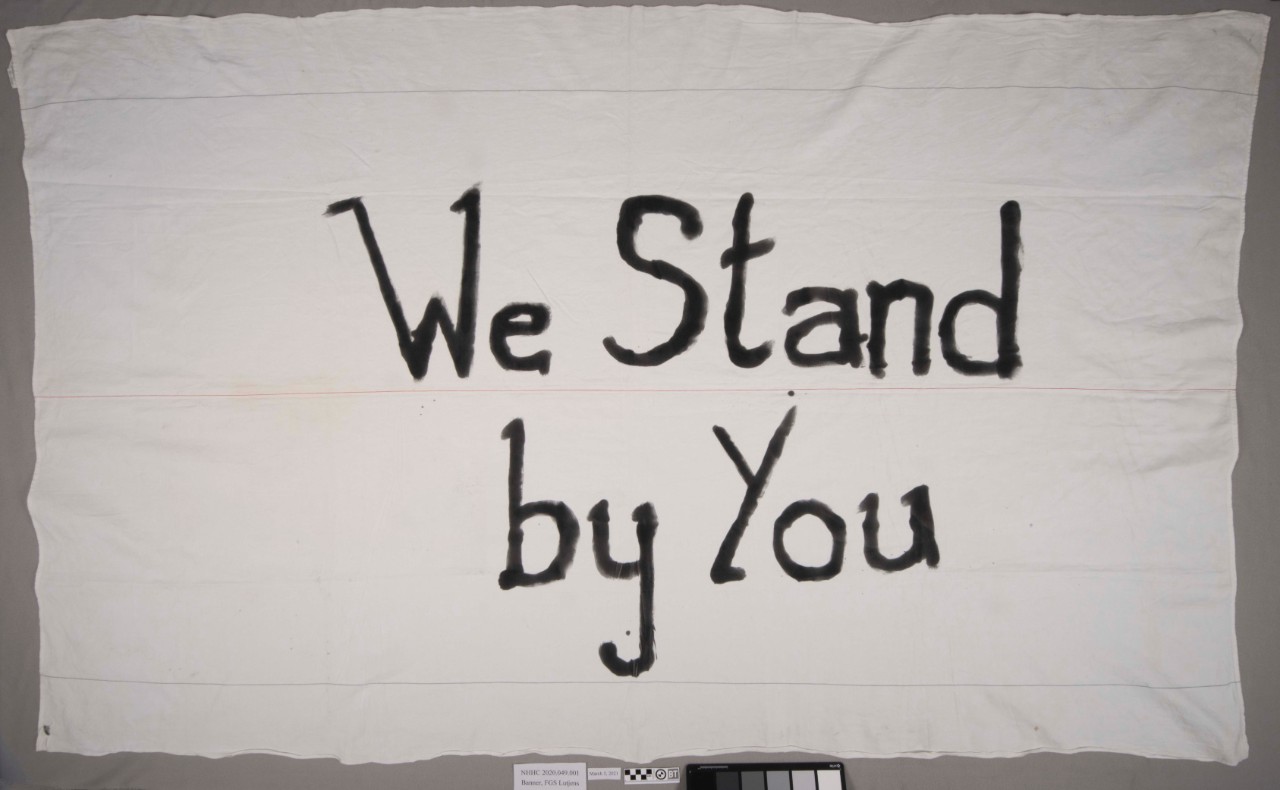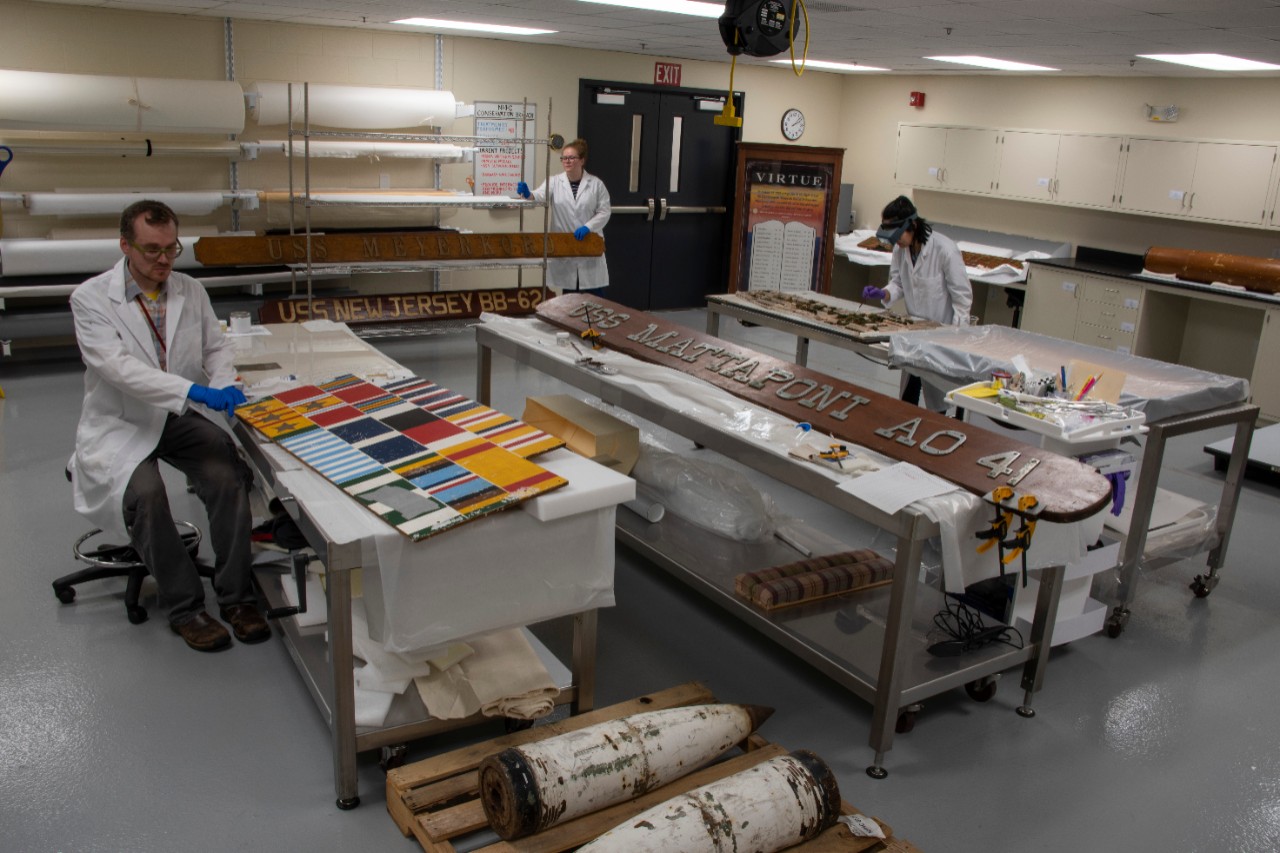Highlighted Projects
Conserving the Physical Reminders of 9/11
NHHC’s Conservation Branch (CO) was established to preserve iconic physical reminders of U.S. Navy heritage for future generations. Recently, CO was tasked with assessing, analyzing, and conserving two evocative objects associated with the September 11 Terrorist Attack: a banner of solidarity produced from a bedsheet by crew members from the German destroyer FGS Lutjens displayed while alongside USS Winston Churchill on 14 September, 2001, and a severely damaged laptop recovered from the rubble of the Pentagon during a joint-service effort by Army, Air Force, Marine, and Navy representatives, including Naval History and Heritage Command’s Assistant Deputy Director for Collection Management Frank V. Thompson.
Bedsheet from German Destroyer FGS Lutjens
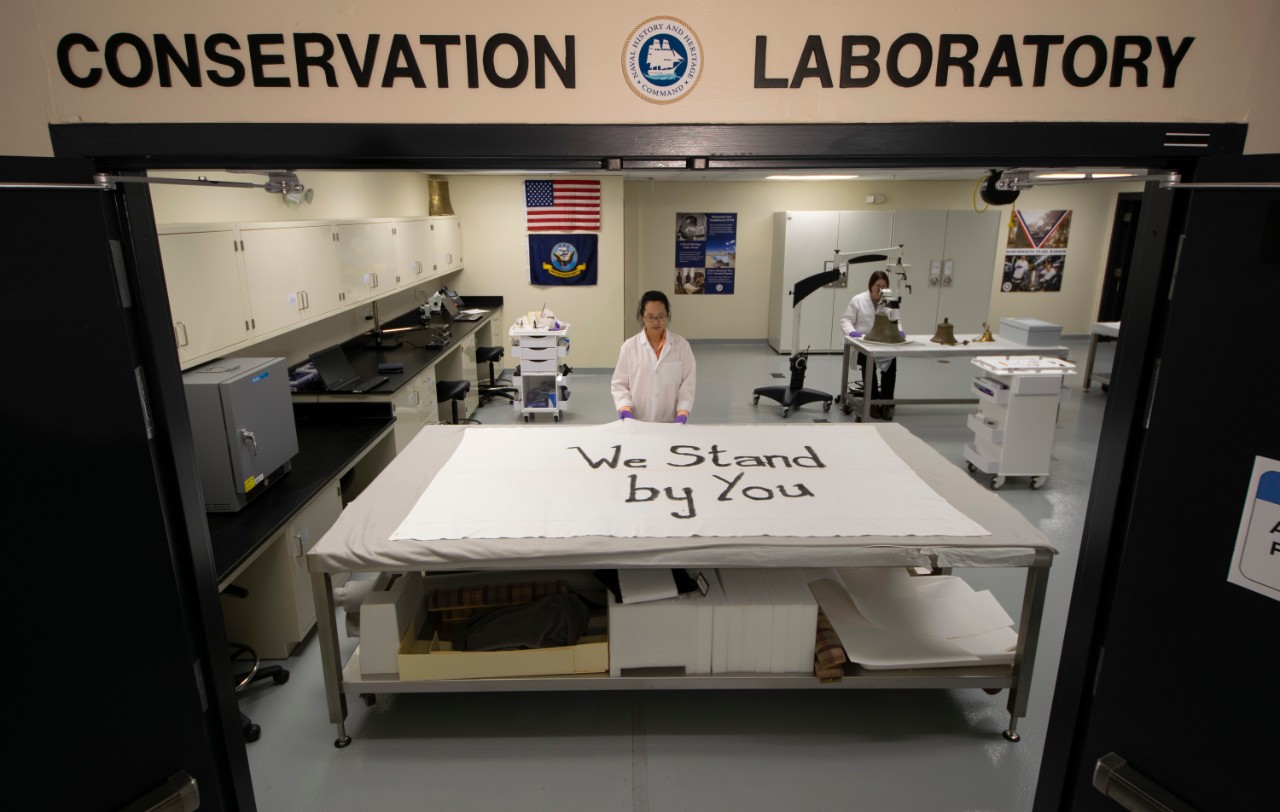
Conservators stabilizing historic artifacts, including the “We Stand by You” bedsheet flown from FGS Lutjens as a banner of solidarity shortly after 9/11, at the Conservation Laboratory within the Collection Management Facility in Richmond, VA.
Senior Conservator and textile specialist, Yoonjo Lee, performed an initial condition assessment of the white bedsheet from FGS Lutjens. It proved structurally stable other than a few small tears, holes, creases, and minor fraying. The front of the bedsheet contains the text “We Stand by You” hand-applied unevenly in black pigment. Some areas of the inscription were slightly stiff and more heavily saturated with pigment, indicating that paint may have been used rather than a marker. Wispy brush strokes are visible as are scattered drips of pigment. She noted overall staining and soiling as well as smaller areas of yellow discoloration.
Positive identification of materials is crucial for conservators to make informed treatment decisions. In this instance, Ms. Lee examined individual fibers with a polarized light microscope and confirmed that the object is a cotton/linen blend.
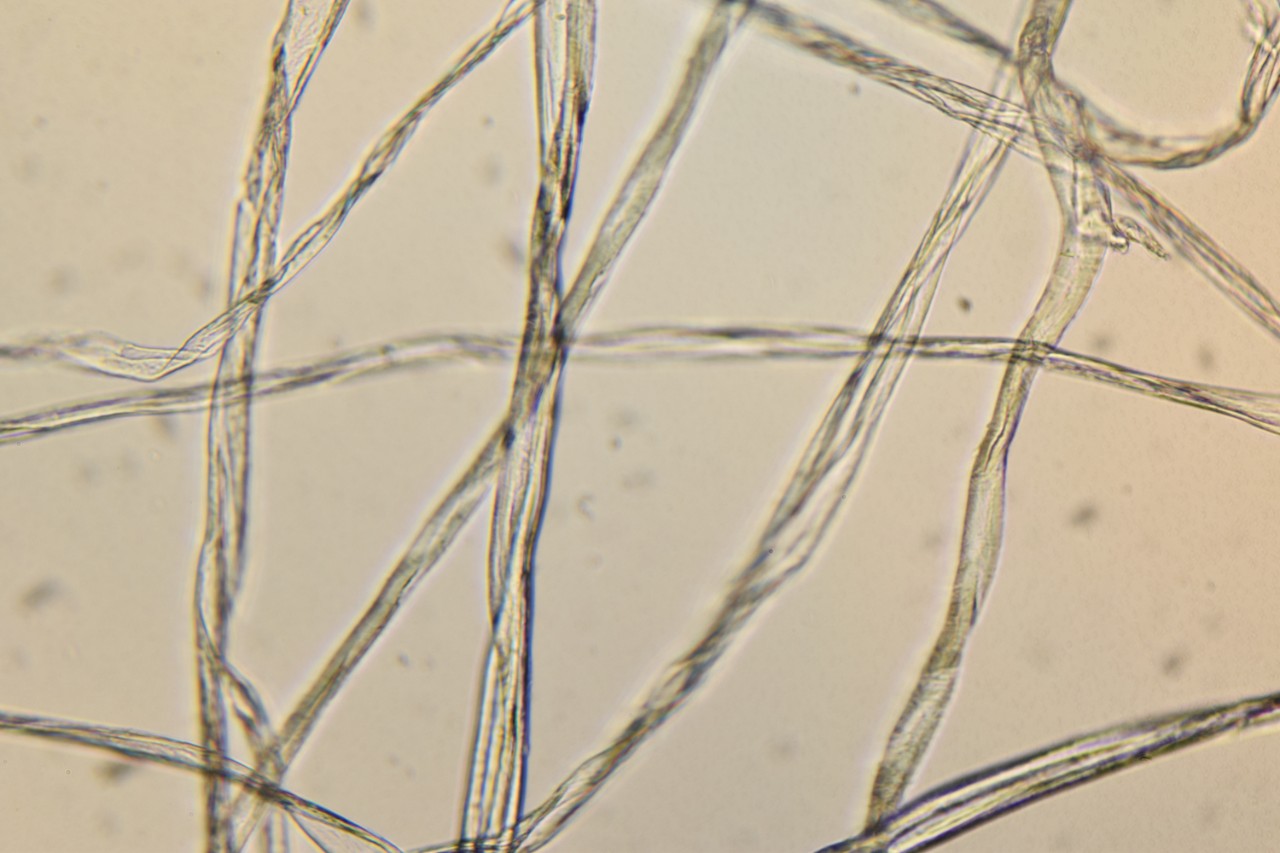
Individual linen fibers from the FGS Lutjens bedsheet positively identified utilizing polarized light microscopy.
Over time, this type of textile will degrade and produce acidic byproducts that will develop into an area of yellowish discoloration. Ms. Lee verified this with a pH test of staining extracted from the object, confirming an acidic result and validating the need to remove the acidic byproducts during treatment.
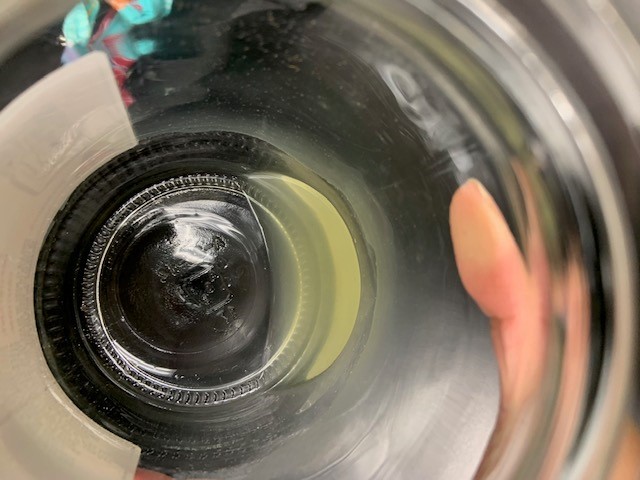
Stained extract removed from areas of yellowish discoloration on the FGS Lutjens bedsheet.
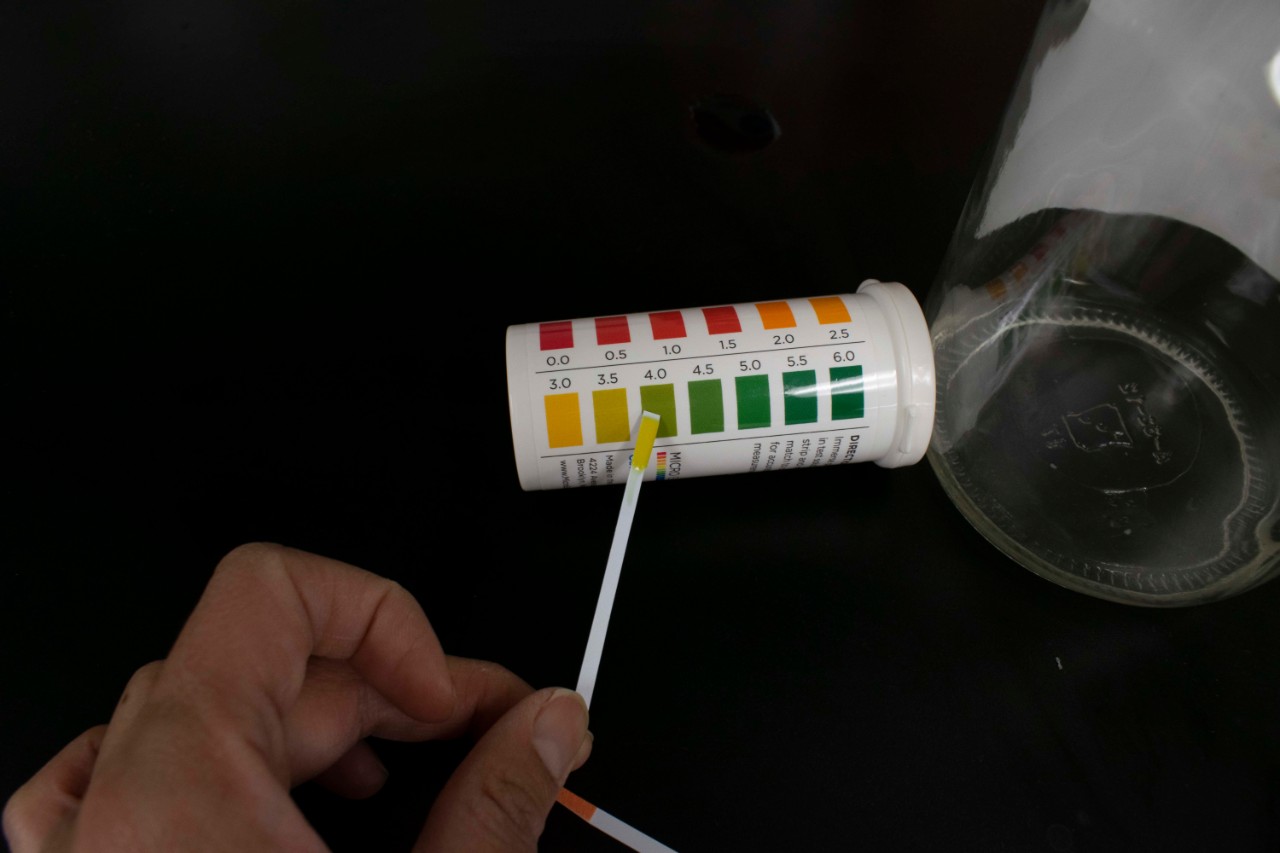
Extract confirmed to be acidic using a pH test strip.
Ms. Lee noted a manufacturer’s tag sewn into the hemmed edge of the bedsheet. The tag contains numeric information as well as “KOCK. BORGHORST”, indicating that the bedsheet likely was produced by Arnold Kock Textil GmbH in Borghorst, Steinfurt, Germany.
The conservation treatment to stabilize the bedsheet for future display included vacuuming the surface to remove particulates and dust, the use of a handheld suction device in conjunction with reverse osmosis water and a surfactant to remove acidic staining, local humidification to relax creases, and stabilization of tears and slits with fine nylon netting and hand-stitching. This series of technical steps required over 100 hours to complete.
Although the fully conserved bedsheet from FGS Lutjens looks very similar to its original condition when it entered the laboratory, it is considerably more stable because of Ms. Lee’s treatment. It is now suitable for display and interpretation as a reminder of resolute solidarity in the early days after September 11.
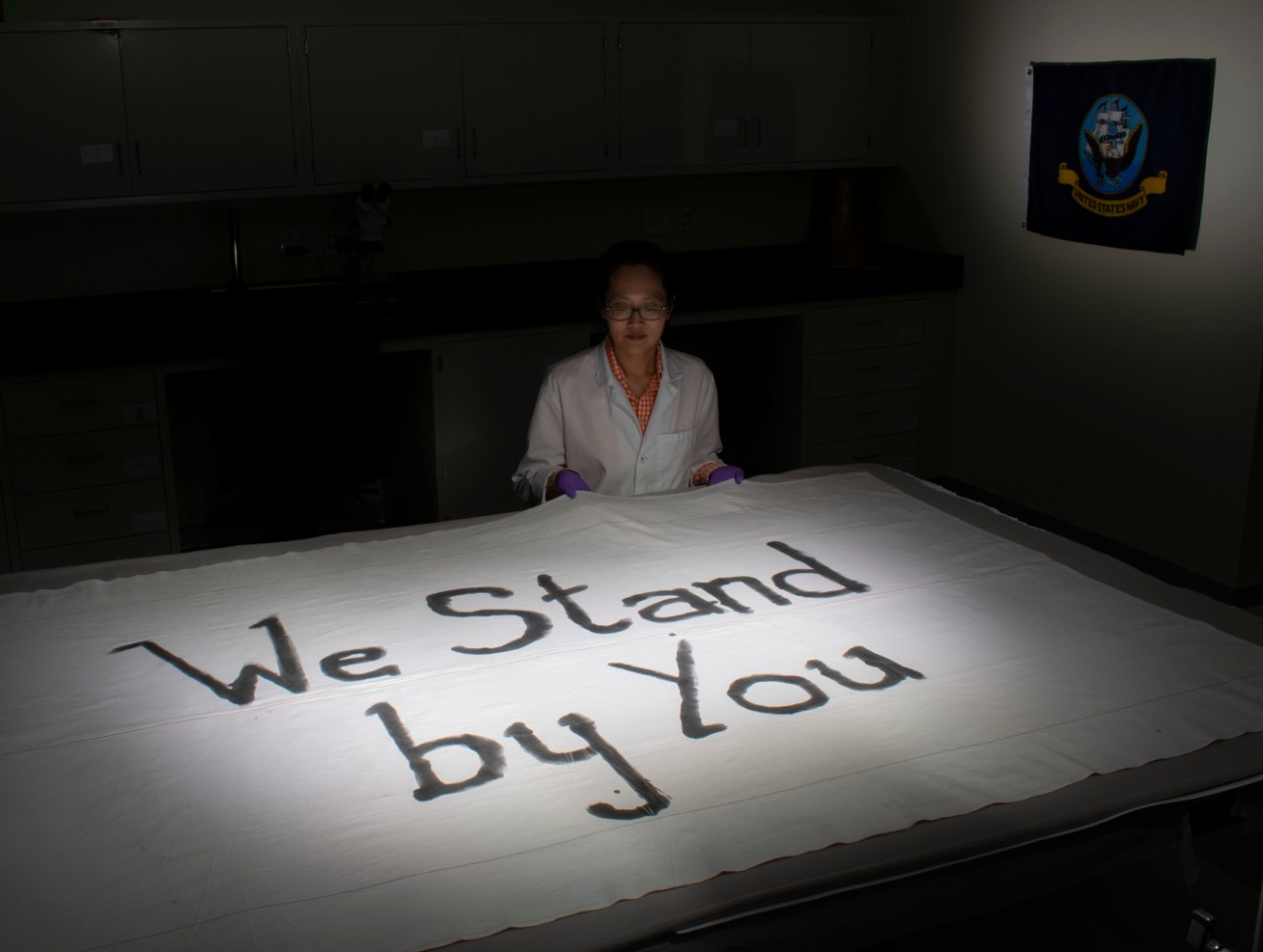
Senior Conservator and textile specialist Yoonjo Lee completes the treatment process for the FGS Lutjens bedsheet at NHHC’s Conservation Laboratory in Richmond, VA.
Pentagon Laptop
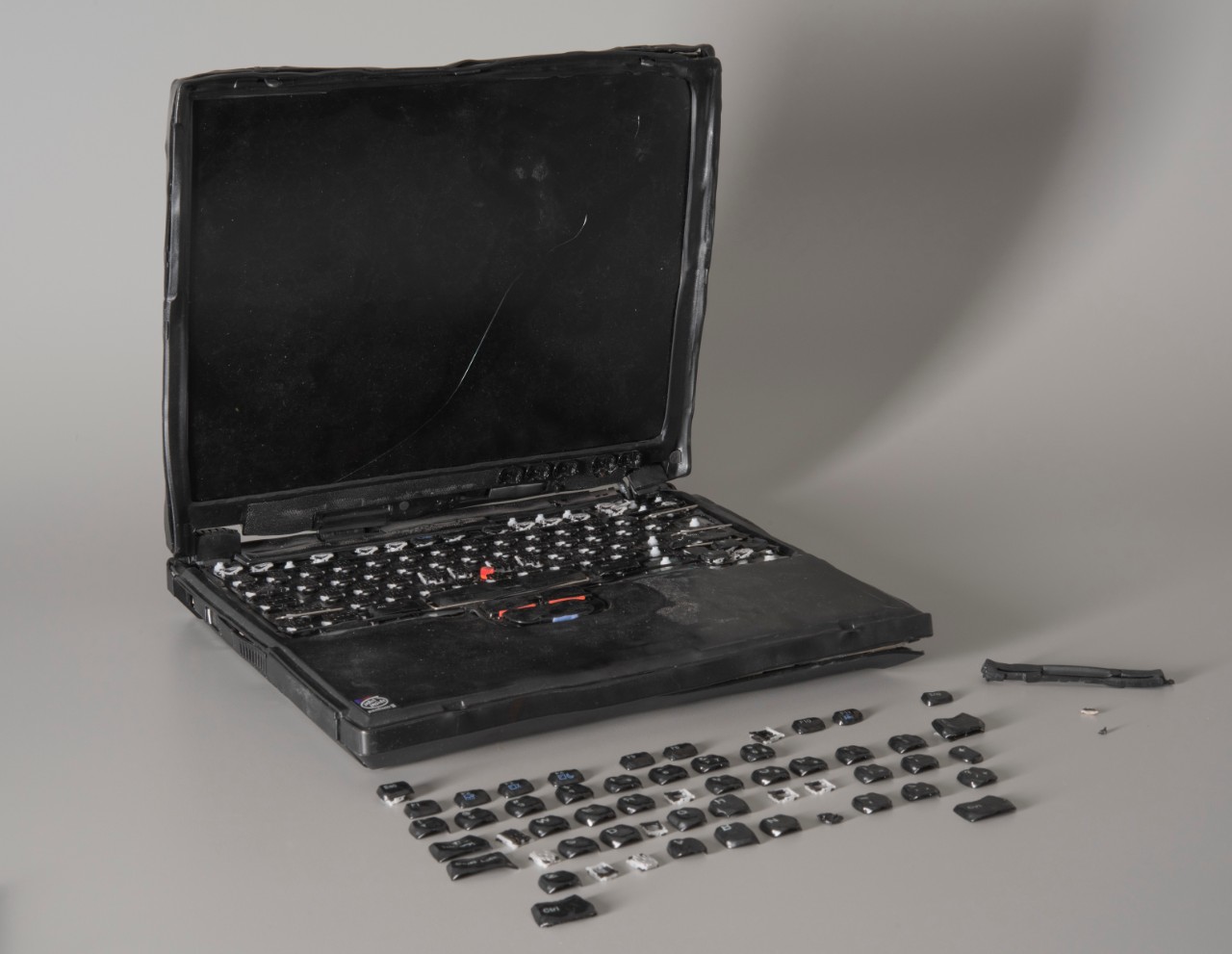
Badly damaged laptop recovered from the Pentagon shortly after 9/11, prior to assessment by Conservation Branch staff.
Recently, Curator Branch staff transferred the 9/11 Pentagon laptop from the Washington Navy Yard to the Conservation Laboratory at the Collection Management Facility in Richmond, VA. Conservators Karl Knauer and Francis Lukezic then performed an initial assessment. An assessment is the most critical step in the lengthy conservation process, consisting of physical examination paired with technical analysis to help determine material composition and condition vulnerabilities, and to inform potential interventive conservation activities. The assessment initiates a decision-making process with the goal of providing long-term stability for a significant object.
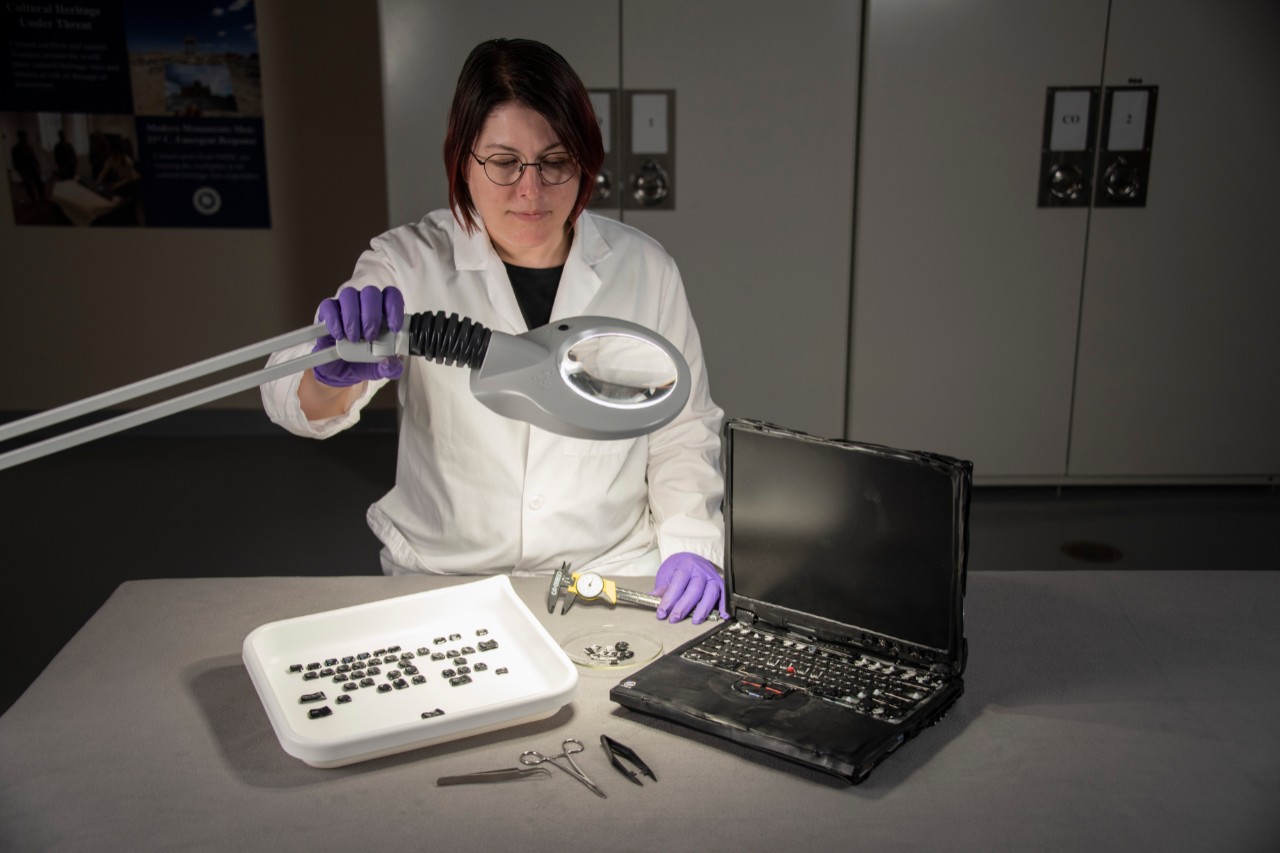
Conservator Francis Lukezic begins assessing the laptop recovered from the Pentagon shortly after 9/11.
The Pentagon laptop is an IBM ThinkPad with a Pentium II processor which at first glance appears like an ordinary laptop. However, a close inspection of condition issues reveals its unique history, or “provenance,” such as its cracked screen and considerable heat damage to its thermoplastic components caused by fire in the form of warping, melting, and keys that have separated from the base of the keyboard; excessive heat exposure formed permanent impressions into the computer’s case from the strap used to secure the laptop within a protective bag.
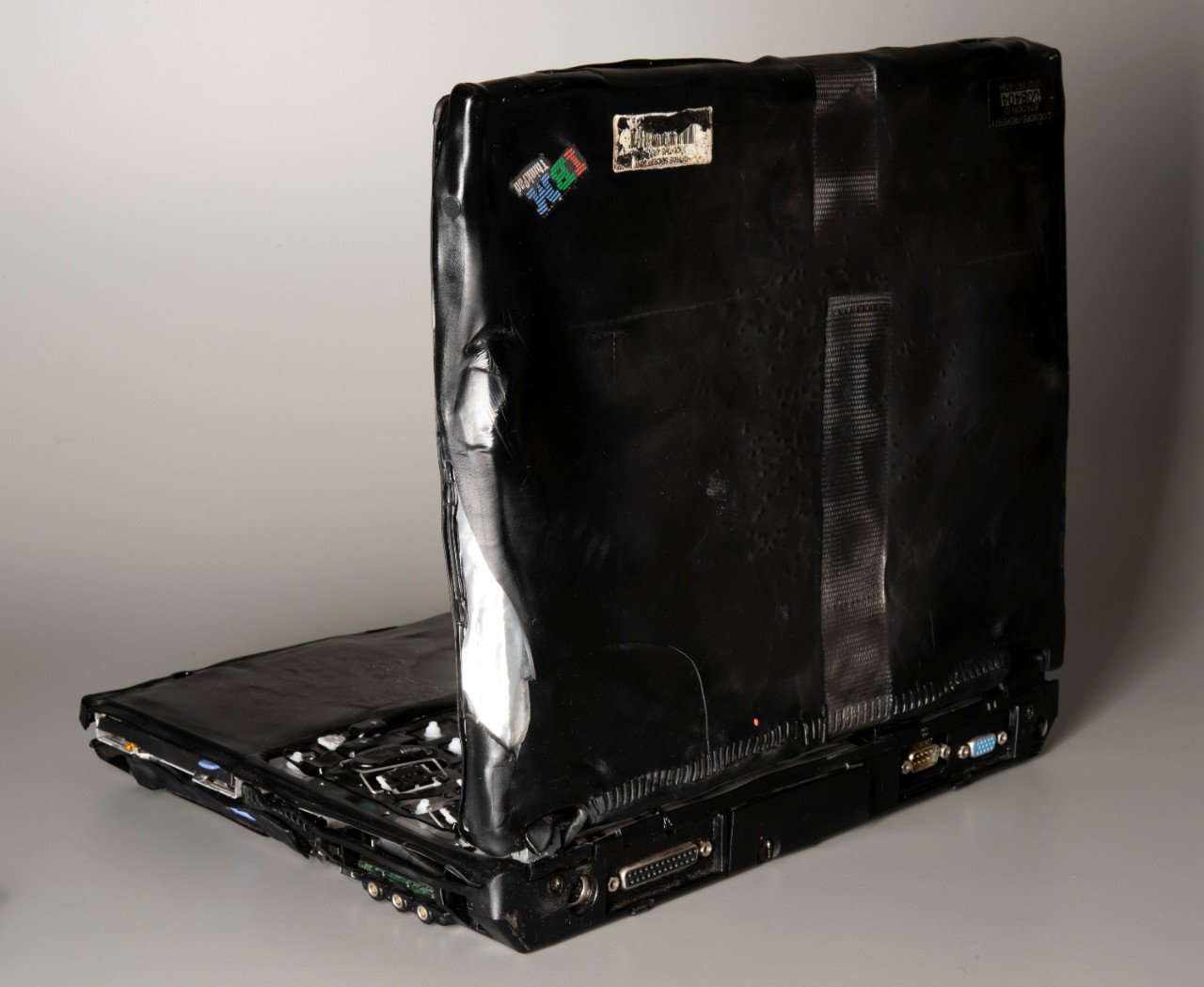
Heat damage from the fire after the attack on the Pentagon caused thermoplastic components to melt, warp, and keys to separate from the base of the laptop. Additionally, heat formed an impression of a security strap on the exterior of the laptop and cracked the screen.
Initial results from the assessment and analysis using infrared spectroscopy show that the outer case, manufactured from a once-rugged engineered blend of polycarbonate/ABS thermoplastics, has embrittled, suggesting that limited hands-on conservation activities could provide meaningful improvement in the condition of the laptop; more aggressive treatment may do more harm than good. Focusing on preventive conservation techniques, such as re-housing the laptop in a custom-designed and fabricated archival storage container, will extend the life and accessibility of this now fragile artifact, recovered from the Pentagon.
Mr. Thompson, who also supervised certain aspects of the creation of the Collection Management Facility and Conservation Branch to support NHHC’s long-term preservation goals, took a moment to reflect on his work with the team that recovered the laptop.
“Looking back after 20 years, I think the events of 9/11 are among the best documented in our collection. Unlike similar events, our cross-service team was actively involved in the collection process from the beginning and that made a huge difference in the final analysis. We were able to secure highly significant artifacts that most people, not associated with the event directly, will nonetheless be able to identify with… It was, and still is, an honor to have been part of that team effort.”
Other Highlighted Projects
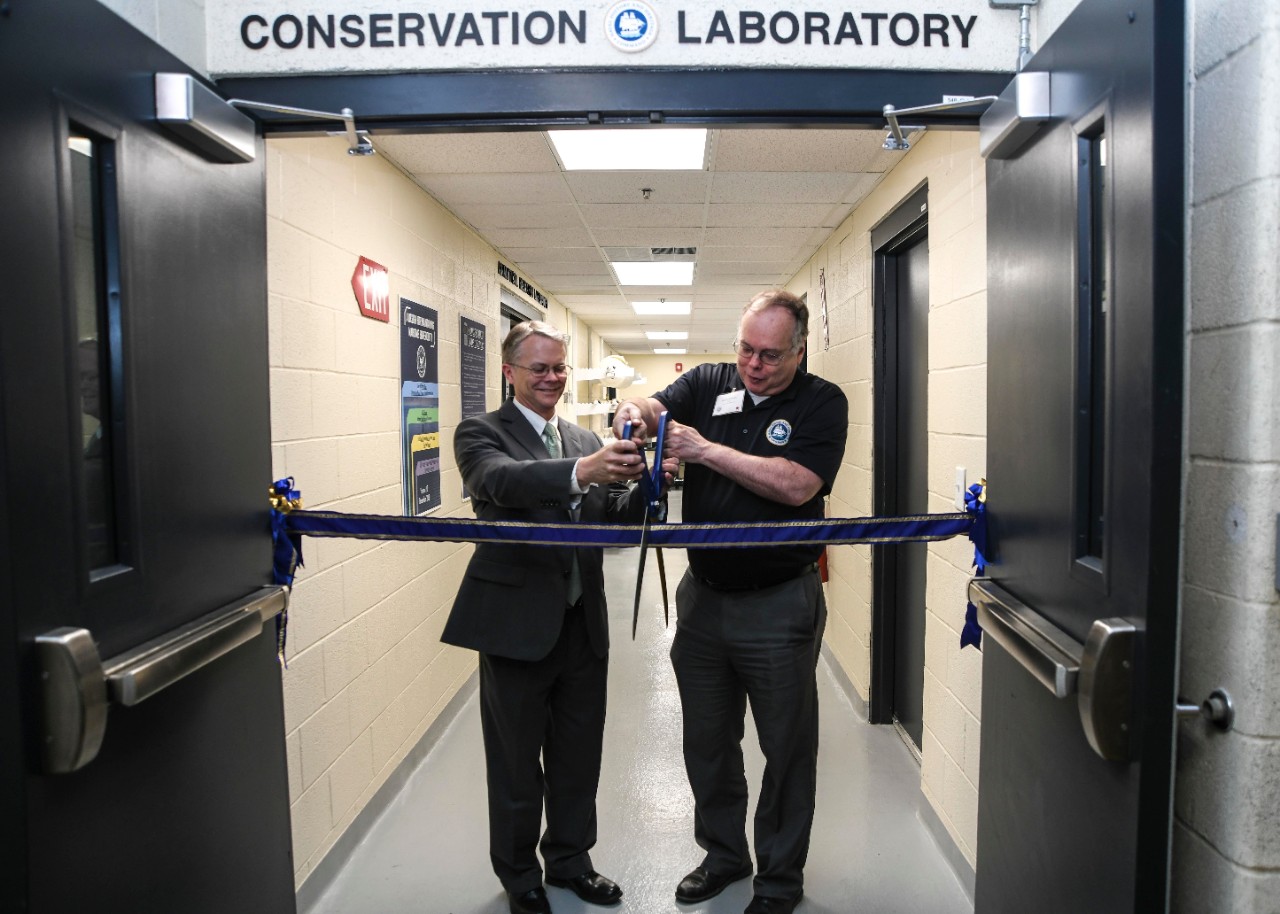
Conservation Laboratory: Grand Opening. The Conservation Branch achieved a major milestone in the official opening of the conservation laboratory at the Collection Management Facility (CMF) in Richmond, Virginia.
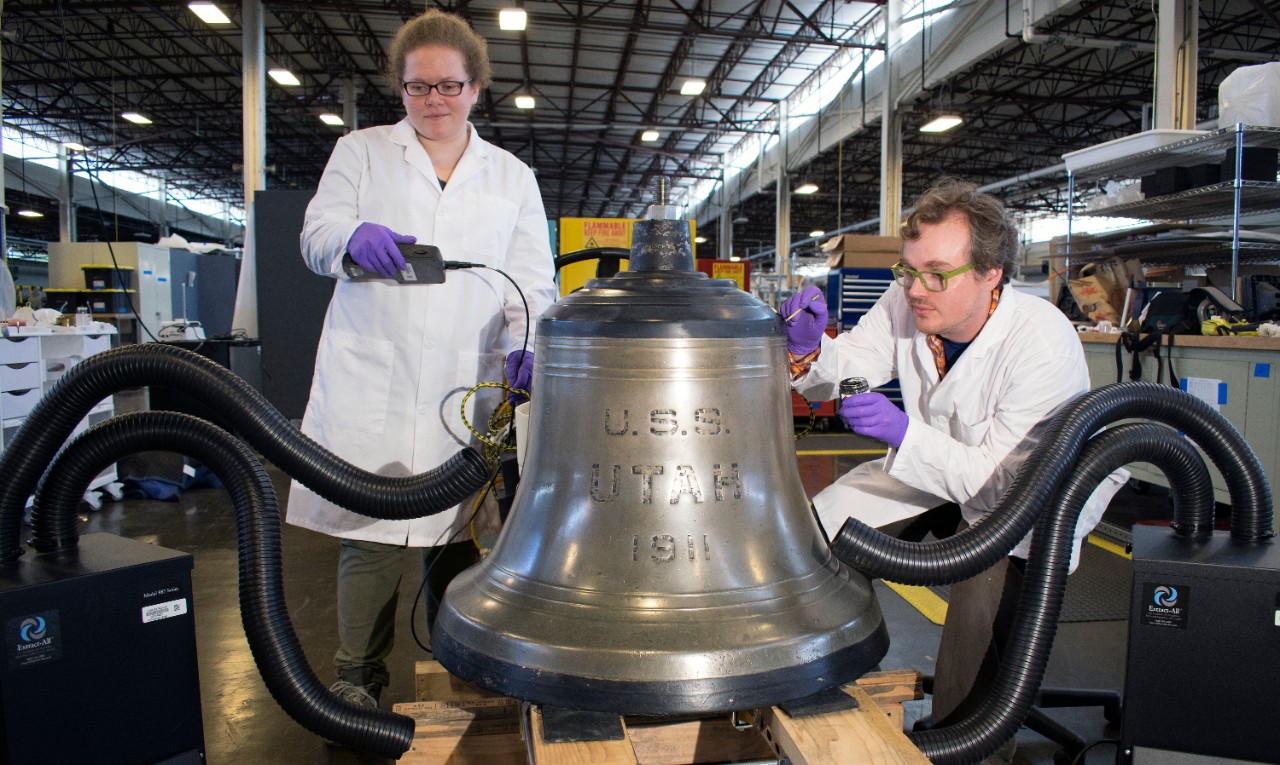
Artifact Case Study: USS Utah Bell. For the 76th anniversary commemoration of the attack on Pearl Harbor, the Conservation Branch treated the ship’s bell of the USS Utah, which bore witness when the ship was struck by torpedoes and capsized in the raid.
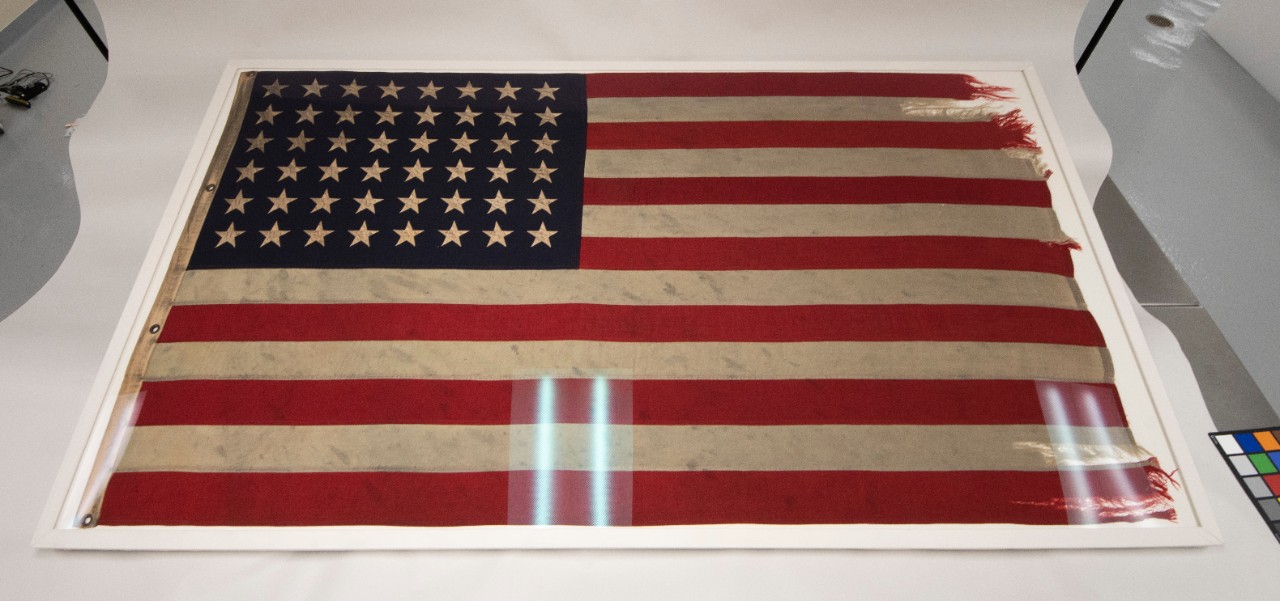
Artifact Case Study: Rehousing the USS Taylor Flag. Rehousing the rediscovered flag from the USS Taylor using archival framing techniques meant it could be safely transported and reunited with veterans from the ship’s crew.
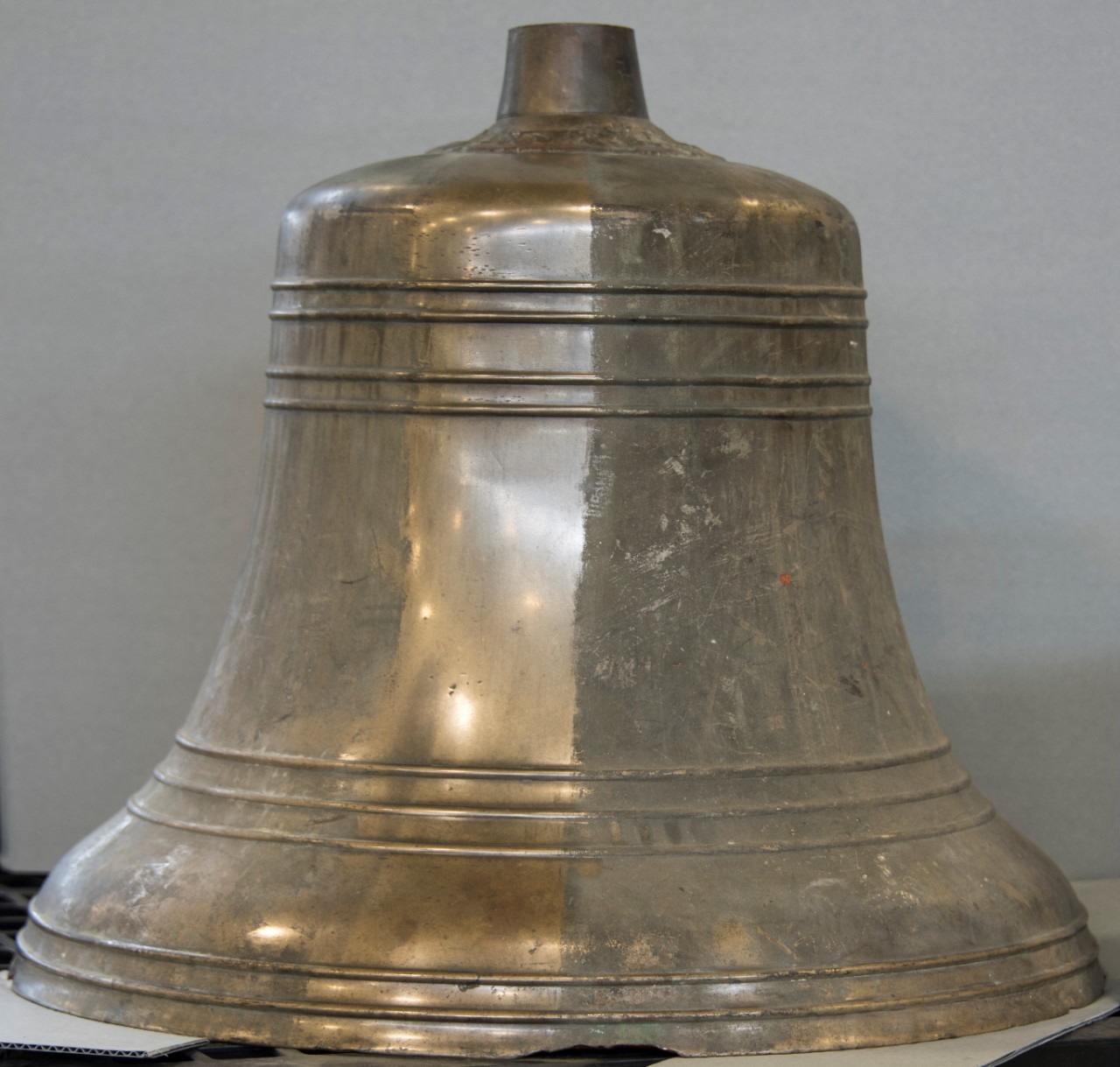
Artifact Case Study: USS Vestal Ship's Bell. For the 75th anniversary commemoration of the attack on Pearl Harbor, the Conservation Branch treated the ship’s bell of USS Vestal, which had been anchored next to USS Arizona on 7 December 1941.

